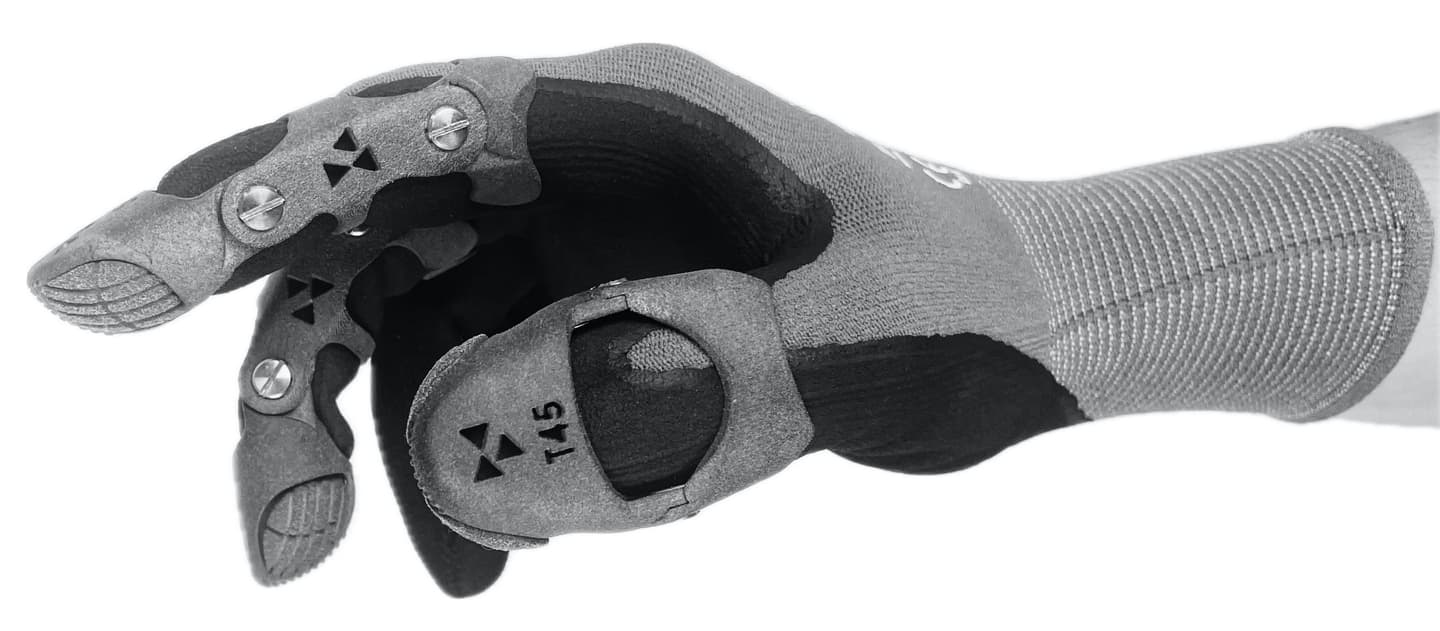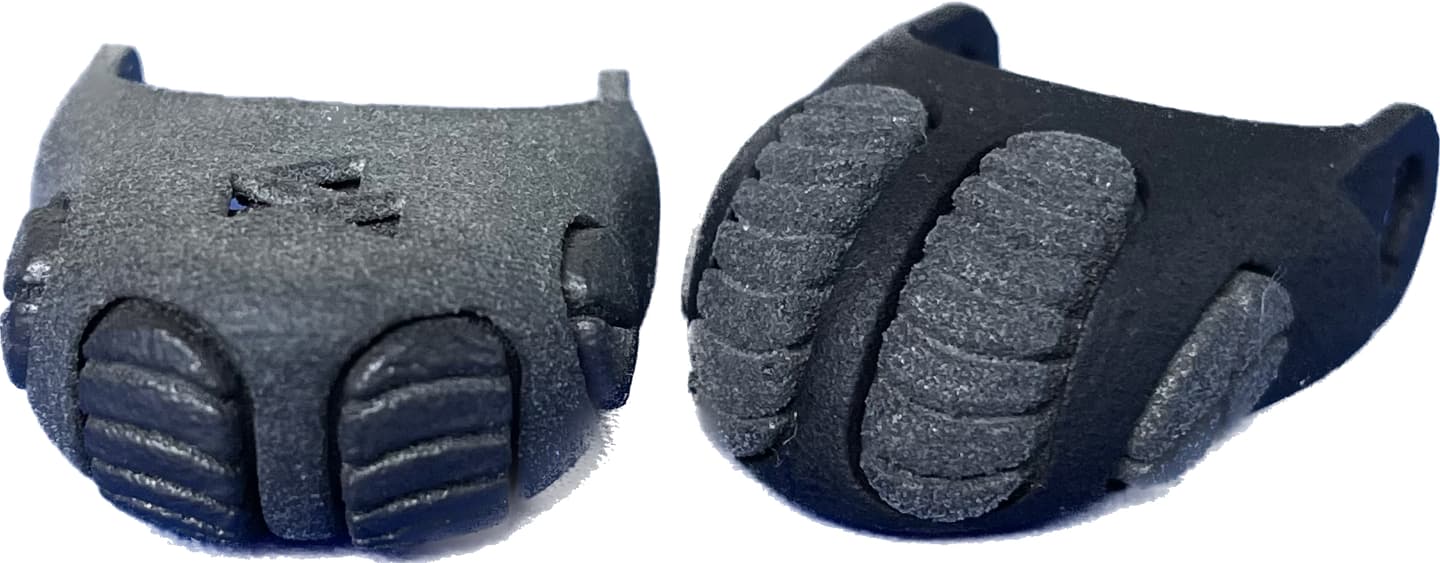Most exoskeletons are big, expensive, wearable devices designed to reduce the load on body parts such as the shoulders, arms or back. The Artus is different, in that it’s made to protect the fingers … and it costs less than US$110.
Manufactured by German company Digity, the Artus is designed mainly to keep the finger joints from overextending.
This means that if the user were to routinely press hard on the operational buttons of a machine, for example, their finger would be kept from flexing back so far that tendon or tissue damage occurred in its joints. That sort of injury typically happens gradually – as opposed to all at once – via repetitive actions.
That said, the Artus does also offer protection against cuts and crushing injuries.

Digity
The device consists of three articulated nylon segments (two in the case of the thumb) which are joined together via polymer/stainless steel joints known as DigiLocks. Those joints reportedly allow the finger to move freely through its normal range of motion, but lock up to keep it from bending back farther than it should.
Openings under each of the wearer’s fingerpads, which are covered in a thin foam called DigiSkin, allow users to retain the tactile sensitivity needed for performing delicate tasks such as handling tiny objects.

Digity
The Artus is currently being marketed towards industrial corporate clients, and is priced at €100 (about $109) per exoskeleton. It’s demonstrated in the video below.
(EN) Introducing: ARTUS Finger Exoskeleton
Source: Digity
Source of Article
